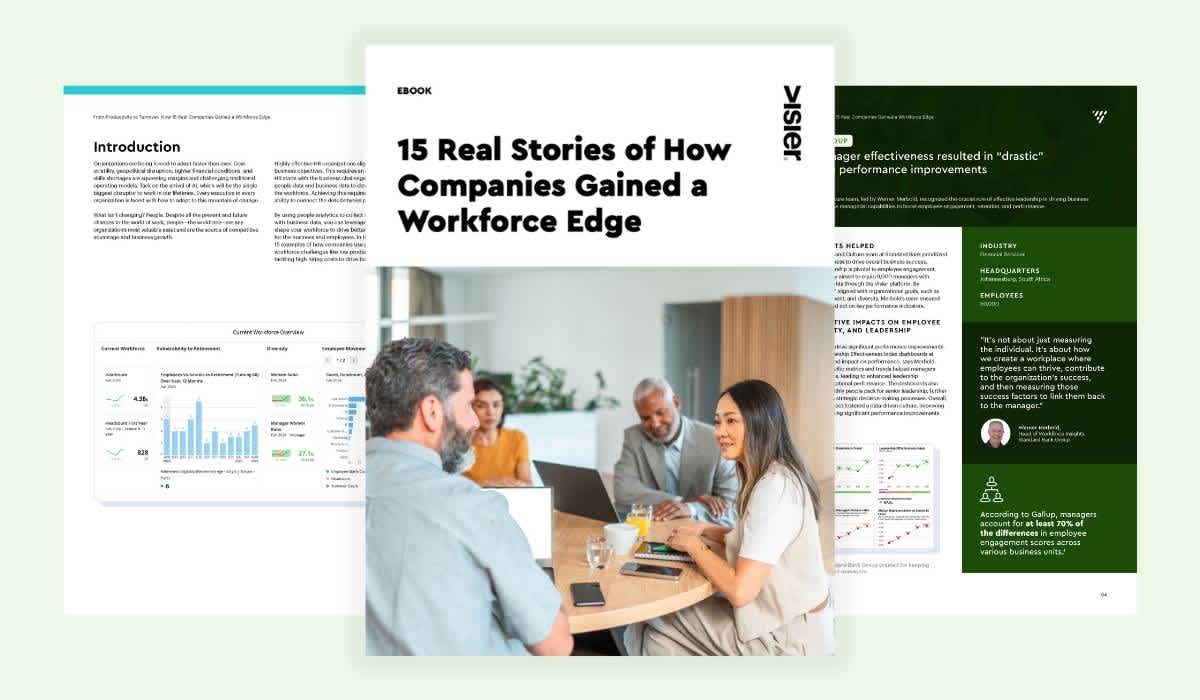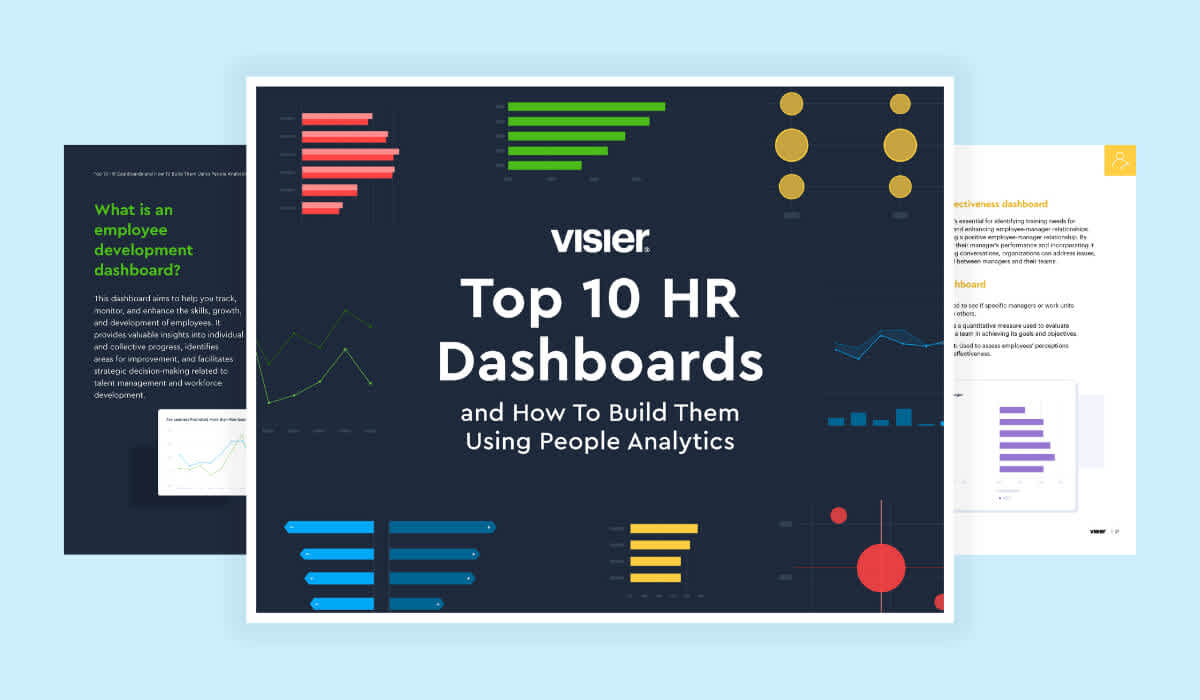HR Future-Proofing vs. Firefighting: 5 Strategic Workforce Planning Tips
In today's AI-driven world, simply reacting to hiring needs isn't enough. Learn how to build a strategic workforce planning approach that anticipates future skills, predicts talent gaps, and prepares your organization for what's ahead.

Line managers and senior executives often perceive HR leaders as delivering the most value when they are firefighting (a.k.a. dowsing “talent fires”).
Quick HR fixes, like filling a vacancy with a pricey new hire or instantly meeting demands for pay raises may lead to near-term wins. However, costly ad hoc solutions can have a negative long-term impact if they are applied to roles that end up being less valuable to the business.
Consider that amid the recent generative AI boom, 61% of employees expressed concern that the skills they currently have could be replaced by AI in the future. Organizations and roles are changing so rapidly that skills requirements are continually in flux.
Today’s pressing talent storm may subside tomorrow. Conversely, a “nice-to-have” skillset now may become a business-critical talent requirement a year from now. But with strategic workforce planning, it's possible to plan ahead—rather than simply react—in this rapidly changing business environment.

What is workforce planning?
Ask 100 people to define workforce planning, and you may get 100 different definitions. In a nutshell, though, workforce planning is the process of ensuring the organization has the right number of people with the right skills in the right place at the right time to deliver on business goals. It requires the capacity and discipline to think well ahead so that you can react more quickly and effectively in the moment.
Workforce planning has two major facets: one is operational and the other is strategic.
Operational workforce planning considers the short term—typically one to two years out—and helps the organization map existing skills, capabilities, and resources back to more near-term requirements.
Strategic workforce planning addresses not only the number of people required to execute the business strategy but also factors in the skills and capabilities those individuals will need in the long term.
It also lets leaders model different cost scenarios so they can understand what impact changes could have on the business. For example, one large multinational manufacturer used our people strategy platform to analyze its workforce by location against dimensions of revenue generation, cost, and risk–to answer strategic questions such as: “Are we in the right regions in terms of cost and productivity of labor?”
Another one of our customers (a 50,000-employee financial services company) uses a monthly planning process to capture workforce demand for the different groups within the organization. After analyzing the Total Cost of Workforce (TCOW), planners compare scenarios for future states of the workforce and see how the cost of contractors or full-time employees would compare over time. This lets the business manage costs while adapting to meet growing customer demands.
Ultimately, strategic workforce planning is a continuous, dynamic process that helps leaders ensure talent decisions align with the business's future needs. It does not replace operational planning.
Instead, it complements operational planning to help businesses make good data-driven talent decisions that balance both immediate and long-term needs.
Workforce planning: How to move from reactive to strategic
Many leaders recognize the need for strategic workforce planning but often operate at a purely operational level. While basic workforce planning focuses mainly on headcount forecasting, today's most successful organizations are moving toward a more sophisticated, strategic approach.
Strategic workforce planning encompasses critical capabilities like:
Skills gap analysis
Future scenario modeling
Talent pipeline development
AI-driven workforce insights
Making this shift from reactive to strategic workforce planning is a significant undertaking. It requires alignment and buy-in from multiple stakeholders including finance, operations, HR, and line managers. However, with focused effort and a clear business case, organizations can successfully make this transition. Follow these five practical tips:
1. Get actionable
People start to get excited when you deliver actionable information. It’s really important to understand the business strategy and start there when building the adoption model. If your goal is to drive sales in a new region, for example, you may need to plan for a different talent pool. With strategic workforce planning, you can model out the cost of that investment, identify time to fill roles, and map out other crucial considerations.
2. Build relationships
When organizations begin rolling out workforce planning, leaders often view it as just another task on their to-do list. That’s why it is critical to build relationships with leaders who are key to its success and review the benefits of the process. One of our most successful clients has had an easier, faster path to success with workforce planning through engaging a strong coalition of sponsors across HR, Finance, and their central corporate planning function.
3. Create a sense of urgency
Emphasize to leaders why an up-to-date plan is critical for each area of the organization. Facilities, for instance, needs to know how many new staff could be joining–and what departments they’ll be in–and well ahead of time, so they can make the right real estate investments and other workplace preparations. Likewise, IT needs to know how many new people will need computers. Book plan review meetings in advance so that planners are motivated to finish their plans on time.
4. Streamline the planning team
At least one person should be dedicated to workforce planning– to be the Master Planner, as we like to call it. They will need to configure the plan, do plan cleanup each month, and collaborate with contributors. At larger organizations, other employees–such as HR business partners–act as part-time capacity leads.
Each capacity lead can support several VP-level leaders by providing data, translating demand into people numbers, and fitting that demand to plan–it’s a natural fit for HR business partners to play this role. The capacity leads can also run regular staffing governance meetings with the leaders, facilitate planning discussions, and make sure plans–and outcomes–are progressing as intended.
5. Get ahead of the talent acquisition curve
At the most effective organizations, the planning process is so effective–and well-communicated–that talent acquisition teams don’t need to wait for requisitions to know they need to hire. That’s because headcount targets in the workforce plan already take into account turnover assumptions like resignations and retirements, allowing recruiting teams to predict future hiring needs and budget requirements more accurately.

Workforce planning tools
1. What to look for in a strategic workforce planning tool
When workforce planning is most effective, the HR, Finance, and Talent Acquisition teams interact continuously–and the workforce planning process adapts to better reflect the unpredictable nature of work.
However, a continuous process isn’t achievable when businesses rely on outdated tools like workforce planning spreadsheets:
Spreadsheets limit collaboration –version control is time-consuming and error-prone, and security breaches are a major risk.
Spreadsheets impose a speed limit –and workforce planning becomes inflexible, unable to adapt fast to change.
AI-driven workforce planning tools eliminate these challenges and turn planning into a more agile, collaborative, and fact-based process. The right workforce planning technology should enable you to leverage all your HR and business data to perform activities such as:
Free up budget by collaboratively creating an accurate forecast
Predict and model different scenarios
Better track workforce plans
Create true alignment between Finance and people initiatives in your organization
Prepare for mergers and acquisitions
People analytics platforms connect data people data (HR data) with work data from functions across the organization, enabling rapid-cycle planning. This gives HR leaders and workforce planners the ability to see how many open positions need to be filled, when they must be filled, and where in the organization they are needed the most.
2. An example of workforce planning
An American biotechnology company operating in an extremely competitive and fast-paced industry adopted Visier and an agile workforce planning methodology.
The company’s Talent Acquisition team conducts a turnover and growth analysis monthly, which is compiled into a scorecard report. In parallel, a workforce plan and predictive model overlays are created. The team pays special attention to anticipated headcount for the year and month-over-month headcount changes, as well as large-scale business initiatives such as M&As, product launches, and market growth.
Once these numbers are available, the TA team shares the analysis with the embedded Human Resource Business Leaders and their respective Finance teams.
This continuous process enables the team to plan for talent shortages by allocating the proper resourcing to support the gaps in the model, manage and source talent more effectively, and have more insightful conversations with stakeholders. This approach to planning will become the de facto standard over the next decade.
Strategic workforce planning: The golden age
21st-century business environments are unpredictable. To have a responsive workforce, the process that supports this (workforce planning) needs to be adaptable itself. It needs to support everyday operational planning, but also has the agile capability to do rapid scenario planning in key situations and specific contexts.
The goal is not to follow the plan to the letter, but to plan continuously so you can adapt quickly when change does happen or when the probability of a specific development occurring becomes high.
With continuous, cost-driven, strategic planning practices, the focus turns towards driving sustainable high performance — and away from HR firefighting.



